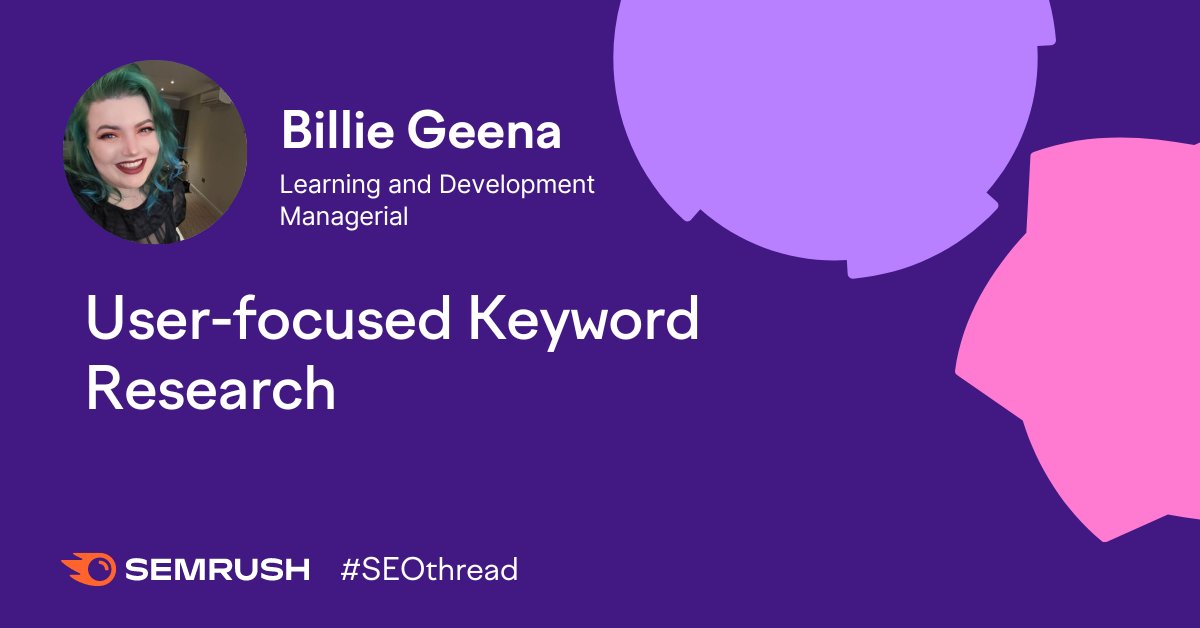
Hey, hey, hey… @billiegeena here
I’m the learning and development manager at @salt_agency, and I’m here to talk to you about how I do keyword research that converts.
So, let’s crack on!
#SEOThread
I’m the learning and development manager at @salt_agency, and I’m here to talk to you about how I do keyword research that converts.
So, let’s crack on!
#SEOThread

I’m not going to talk about getting data, instead, I will show you how I finalise keywords. First, I break down a site into its different intent categories and priority levels i.e. Navigation = Primary, Category = Primary, Local Page = Supporting
@billiegeena #SEOThread
@billiegeena #SEOThread
I then use this data to go further to work out the intent of the users and decide where they might be in the sales funnel. Typically this looks like “seeking knowledge”, “seeking clarity” and “Seeking a service”.
@billiegeena #SEOThread
@billiegeena #SEOThread
Knowledge -
This is our opportunity to entice someone who has a concern but may not know what their options are. The knowledge section would answer a user's concerns and then lead them down the sales funnel
This could look like FAQs, blog posts etc
@billiegeena #SEOThread
This is our opportunity to entice someone who has a concern but may not know what their options are. The knowledge section would answer a user's concerns and then lead them down the sales funnel
This could look like FAQs, blog posts etc
@billiegeena #SEOThread
Clarity -
This is a chance to talk about the fine details of the service leading them closer to converting. It allows us to target those who are further down the sales funnel and will be using specific search terms.
These could be specific service pages
@billiegeena #SEOThread
This is a chance to talk about the fine details of the service leading them closer to converting. It allows us to target those who are further down the sales funnel and will be using specific search terms.
These could be specific service pages
@billiegeena #SEOThread
Service -
These will be an overview of all services available, which will then link to the specific services. These are your primary category or service pages and will target those difficult, high search volume pages.
@billiegeena #SEOThread
These will be an overview of all services available, which will then link to the specific services. These are your primary category or service pages and will target those difficult, high search volume pages.
@billiegeena #SEOThread
I like to map out how different users navigate a site by following the sales funnel using the same research categorization as above. Mine typically look like a navigation map.
#SEOThread @billiegeena
#SEOThread @billiegeena

You will then have a big list of keywords that are mapped and you understand what the user may be thinking when they are looking for that content. You can then start aligning with the data.
#SEOThread @billiegeena
#SEOThread @billiegeena

I then double-check by Googling each and everyone one of those keywords. To make sure the intent aligns with what’s actually in the SERPs. I keep checking and Googling until I’m happy.
#SEOThread @billiegeena
#SEOThread @billiegeena
Voilà, that’s it. I’ve done all these additional steps, so if a client has a question or pushes back I have all the data I need to convince them
And the start of any content changes, navigational updates, and structural and internal linking is done.
#SEOThread @billiegeena
And the start of any content changes, navigational updates, and structural and internal linking is done.
#SEOThread @billiegeena
If you like what you’ve read and what to see what else I do, you can follow @billiegeena. Where I mainly talk about SEO, early 2000s emo nostalgia, and my two pet rabbits, Hades & Ravioli!
#SEOThread
#SEOThread
• • •
Missing some Tweet in this thread? You can try to
force a refresh













